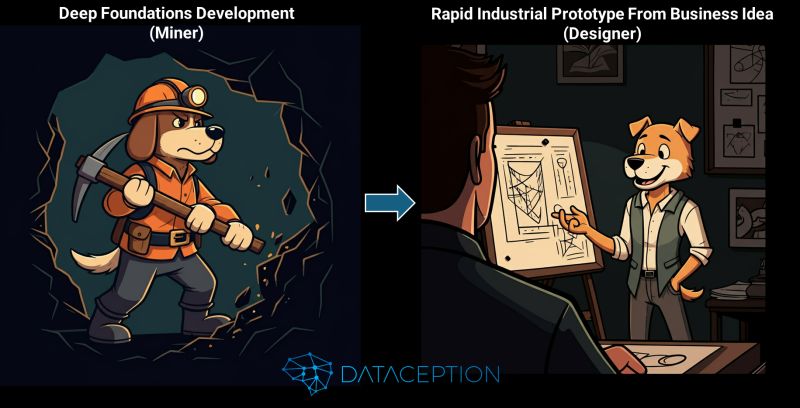Just had a great discussion with Eddie Short on how GenAI is revolutionizing the journey from idea to industrial prototype—with real UX and business functionality in front of the customer faster than ever before.
The emergence of Large Language Models (LLMs) isn’t just changing how we write code—it’s fundamentally altering how we transform business ideas into real, usable prototypes.
The Traditional "Miner" Mindset: Extracting and Assembling Raw Materials
Historically, developing a software solution involved a long, linear process:
🔹 Requirement workshops, research, and UX wireframing
🔹 Technical spikes to test feasibility
🔹 Building foundational platforms, security, and integrations
🔹 Eventually, after months of effort, the business gets something tangible
By this point, however, market conditions may have shifted, or worse—the solution doesn’t quite match what the business expected.
This is the Miner mindset—spending time extracting and refining raw materials before anything usable emerges.
The New AI-Driven "Designer" Mindset: Translating Ideas into Reality
Now, with LLMs and AI-powered Data Object Graphs (DOGs), we can radically accelerate this process.
🔹 AI can generate first iterations of end-to-end business processes (DOGs) from a simple prompt
🔹 AI builds full-stack prototypes—including UX, backend flows, and real data connections
🔹 Instead of months, we now get functional prototypes in days
This is the Designer mindset—rapidly creating business-facing experiences instead of just assembling components.
Why This Matters: The 80% Rule
❌ AI won’t get everything right on the first pass.
✅ But it can handle up to 80% of the work, allowing us to:
✔ Get a working concept in front of business users quickly
✔ Validate ideas earlier in the process
✔ Refine based on real feedback instead of static requirements
This accelerated feedback loop is a complete paradigm shift in software design, enabling rapid iteration and business-driven prototyping.
Challenges & The Role of Human Expertise
While LLMs are game-changers, they’re not magic. They struggle with:
⚠ Large codebases—token limits mean AI can forget context over time
⚠ Complex workflows—long-running or interdependent processes require human refinement
The key? Understanding when to let AI accelerate the work and when to step in with human expertise.
Successful AI-driven development is about guiding the AI, breaking down problems effectively, and using AI as a powerful co-creator—not a replacement.

The Future: Developers as Designers
The message is clear: the best AI-powered developers aren’t just writing code—they’re designing rich, business-facing systems and accelerating delivery with AI.
With Dataception’s DOGs (Data Object Graphs), AI is just a walk in the park. 🐶🚀

